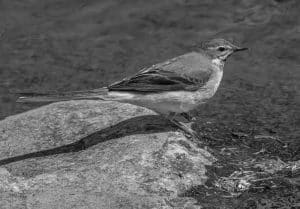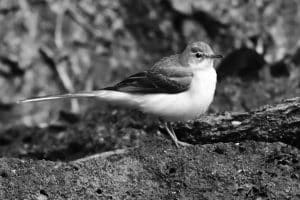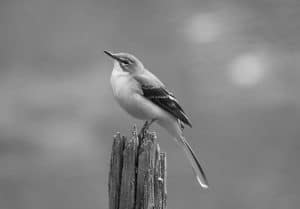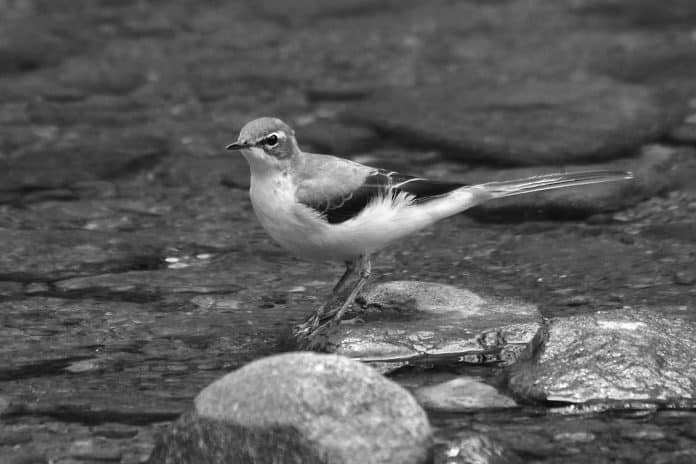Introduction to the Gray Wagtail
Nestled amidst the lush landscapes of Tanzania, the gray wagtail (Motacilla cinerea) is a captivating avian species that often goes unnoticed by the casual observer. This small, sleek bird possesses a quiet elegance that belies its true charm and significance within the region’s diverse avifauna. As you delve into the world of the gray wagtail in Tanzania, you’ll uncover a fascinating tale of adaptation, resilience, and the intricate beauty that can be found in the most unassuming of creatures.
Physical Characteristics and Habitat of the Gray Wagtail

The gray wagtail is a member of the Motacillidae family, known for its distinctive long, wagging tail that gives the bird its name. With a slender build and a graceful, almost delicate appearance, the gray wagtail measures approximately 18-20 cm in length, with a wingspan of around 25-28 cm. Its plumage is a striking combination of shades, with a slate-gray back, a bright yellow belly, and a contrasting black throat and eye stripe. The bird’s long, thin legs and sharp, pointed beak are well-suited for its preferred habitat and feeding habits.
The gray wagtail thrives in a variety of aquatic environments, from swift-flowing streams and rivers to the tranquil shores of lakes and ponds. These birds are often found near water sources, where they can easily access their preferred prey of small insects, crustaceans, and even small fish. Their agile movements and ability to perch on rocks, logs, or other structures near the water’s edge make them well-adapted to their riverine and lacustrine habitats.
Distribution and Population of the Gray Wagtail in Tanzania
The gray wagtail has a widespread distribution across parts of Europe, Asia, and Africa, with a significant population found within the borders of Tanzania. In this East African nation, the gray wagtail can be encountered in various regions, from the northern Serengeti and Kilimanjaro areas to the southern highlands and coastal regions.
While the exact population size of the gray wagtail in Tanzania is not well-documented, the species is generally considered to be of “Least Concern” on the IUCN Red List of Threatened Species. However, as with many avian species, the gray wagtail’s numbers may be affected by factors such as habitat loss, pollution, and climate change, making ongoing monitoring and conservation efforts crucial for maintaining a healthy and sustainable population.
Behavior and Feeding Habits of the Gray Wagtail
The gray wagtail is a highly active and agile bird, often seen darting along the water’s edge or perching on rocks and logs, constantly wagging its long tail back and forth. This behavior is believed to be a means of flushing out and attracting its prey, which includes a diverse range of small invertebrates, such as insects, spiders, and crustaceans.
In their search for food, gray wagtails often employ a unique hunting technique, known as “foot-trembling.” This behavior involves the bird rapidly shaking its feet on the ground or in shallow water, which can help uncover and dislodge their prey from the substrate. Their sharp, pointed beaks are well-suited for plucking these small creatures from their hiding spots and consuming them with efficiency.
Gray wagtails are also known to be opportunistic feeders, occasionally supplementing their diet with small fish or even tadpoles, depending on the availability of resources in their immediate environment.
Breeding and Nesting Patterns of the Gray Wagtail
The breeding season for the gray wagtail in Tanzania typically coincides with the onset of the rainy season, usually between March and June. During this time, the birds engage in a series of courtship behaviors, including aerial displays, wing-flapping, and the exchange of food items between potential mates.
Once a pair has established a bond, they will work together to construct a nest, often selecting a sheltered location, such as a crevice in a rock face, a cavity in a tree, or even a ledge on a building. The nest itself is a carefully woven structure, made from a variety of natural materials, including moss, grass, and even human-made items like string or fabric.
Within the nest, the female gray wagtail will lay a clutch of 4-6 eggs, which she will incubate for approximately 13-14 days. Once the chicks hatch, both parents will share the responsibilities of feeding and caring for the young, ensuring their successful development and eventual fledging from the nest.
Conservation Status and Threats Faced by the Gray Wagtail in Tanzania

As mentioned earlier, the gray wagtail is currently classified as a species of “Least Concern” on the IUCN Red List, indicating that its global population is relatively stable. However, this does not mean that the species is entirely free from potential threats and challenges in its Tanzanian habitat.
One of the primary concerns for the gray wagtail in Tanzania is the ongoing degradation and loss of its preferred aquatic habitats. The increasing demand for water resources, coupled with issues such as pollution and the impacts of climate change, can lead to the drying up or contamination of the streams, rivers, and wetlands that the gray wagtail relies upon for foraging and nesting.
Additionally, the gray wagtail may face indirect threats from the expansion of human settlements and infrastructure, which can disrupt their natural movement patterns and access to suitable breeding and feeding grounds. Ongoing monitoring and conservation efforts, in collaboration with local communities and government agencies, will be crucial in ensuring the long-term survival and well-being of the gray wagtail population in Tanzania.
Gray Wagtail Sightings and Birdwatching Hotspots in Tanzania
For avid birdwatchers and nature enthusiasts visiting Tanzania, there are several prime locations where you can increase your chances of spotting the elusive gray wagtail. Some of the top birdwatching hotspots in the country include:
- Serengeti National Park: The northern regions of the Serengeti, particularly around the Mara River and its tributaries, are known to be home to healthy populations of gray wagtails.
- Kilimanjaro National Park: The forested slopes and streams around Mount Kilimanjaro provide an ideal habitat for the gray wagtail, making it a must-visit destination for birdwatchers.
- Ruaha National Park: This expansive park in southern Tanzania boasts a diverse array of avian species, including the gray wagtail, which can often be spotted along the park’s rivers and waterways.
- Mikumi National Park: Located in the eastern part of the country, Mikumi National Park is a haven for birdwatchers, with the gray wagtail being one of the park’s resident species.
- Coastal regions: The mangrove forests, estuaries, and coastal wetlands of Tanzania’s Indian Ocean coastline are also known to be excellent spots for observing the gray wagtail.
When visiting these and other birdwatching hotspots in Tanzania, be sure to bring your binoculars, camera, and a keen eye, as the gray wagtail’s subtle coloration and rapid movements can sometimes make it challenging to spot.
Tips for Spotting and Identifying the Gray Wagtail
Observing the gray wagtail in its natural habitat can be a rewarding experience for birdwatchers and nature enthusiasts alike. Here are some tips to help you spot and identify this elusive bird:
- Look for movement: The gray wagtail’s distinctive tail-wagging behavior is often the first clue that you’ve spotted one. Scan the banks of rivers, streams, and ponds for any small, darting birds with constantly moving tails.
- Pay attention to habitat: As mentioned earlier, the gray wagtail is closely associated with aquatic environments, so focus your search on areas with water sources, such as wetlands, riverbanks, and lakeshores.
- Listen for their calls: Gray wagtails have a variety of vocalizations, including a high-pitched “tsee-tsee-tsee” call and a more melodic, warbling song. Familiarize yourself with these sounds to help identify the birds.
- Look for distinctive features: The gray wagtail’s slate-gray back, bright yellow belly, and black throat and eye stripe are key identifying features. Also, note the bird’s slender build and long, wagging tail.
- Use field guides and apps: Consult reliable field guides or mobile apps that can help you compare the gray wagtail’s features with other similar-looking species, such as the pied wagtail or the yellow wagtail.
By keeping these tips in mind and exploring the prime birdwatching hotspots in Tanzania, you’ll increase your chances of spotting and appreciating the subtle beauty of the gray wagtail.
Interesting Facts about the Gray Wagtail
As you delve deeper into the world of the gray wagtail, you’ll uncover a wealth of fascinating facts about this captivating bird:
- The gray wagtail is one of the few bird species that can walk and run on the surface of water, using its long, slender toes to maintain balance.
- These birds are known to have a strong attachment to their breeding territories, with some individuals returning to the same nesting sites year after year.
- Gray wagtails are capable of diving into the water to catch small fish or aquatic insects, demonstrating their versatility as predators.
- The species’ name, “Motacilla cinerea,” is derived from the Latin words “motare” (to move) and “cinerea” (ash-colored), perfectly capturing the bird’s distinctive wagging tail and gray plumage.
- In some cultures, the gray wagtail is considered a symbol of good luck or a harbinger of spring, adding to the bird’s cultural significance.
Conclusion: Appreciating the Beauty of Tanzania’s Gray Wagtail

As you’ve discovered, the gray wagtail is a true gem of Tanzania’s avifauna, a bird that embodies the quiet grace and resilience of the natural world. From its elegant physical features to its fascinating behaviors and adaptations, the gray wagtail is a testament to the diversity and wonder that can be found in even the most unassuming of creatures.
As you explore the natural wonders of Tanzania, be sure to keep an eye out for the elusive yet captivating gray wagtail. By learning more about this remarkable bird and supporting conservation efforts, you can play a vital role in ensuring the continued survival and appreciation of this subtle avian beauty. Start planning your next birdwatching adventure in Tanzania today!

































